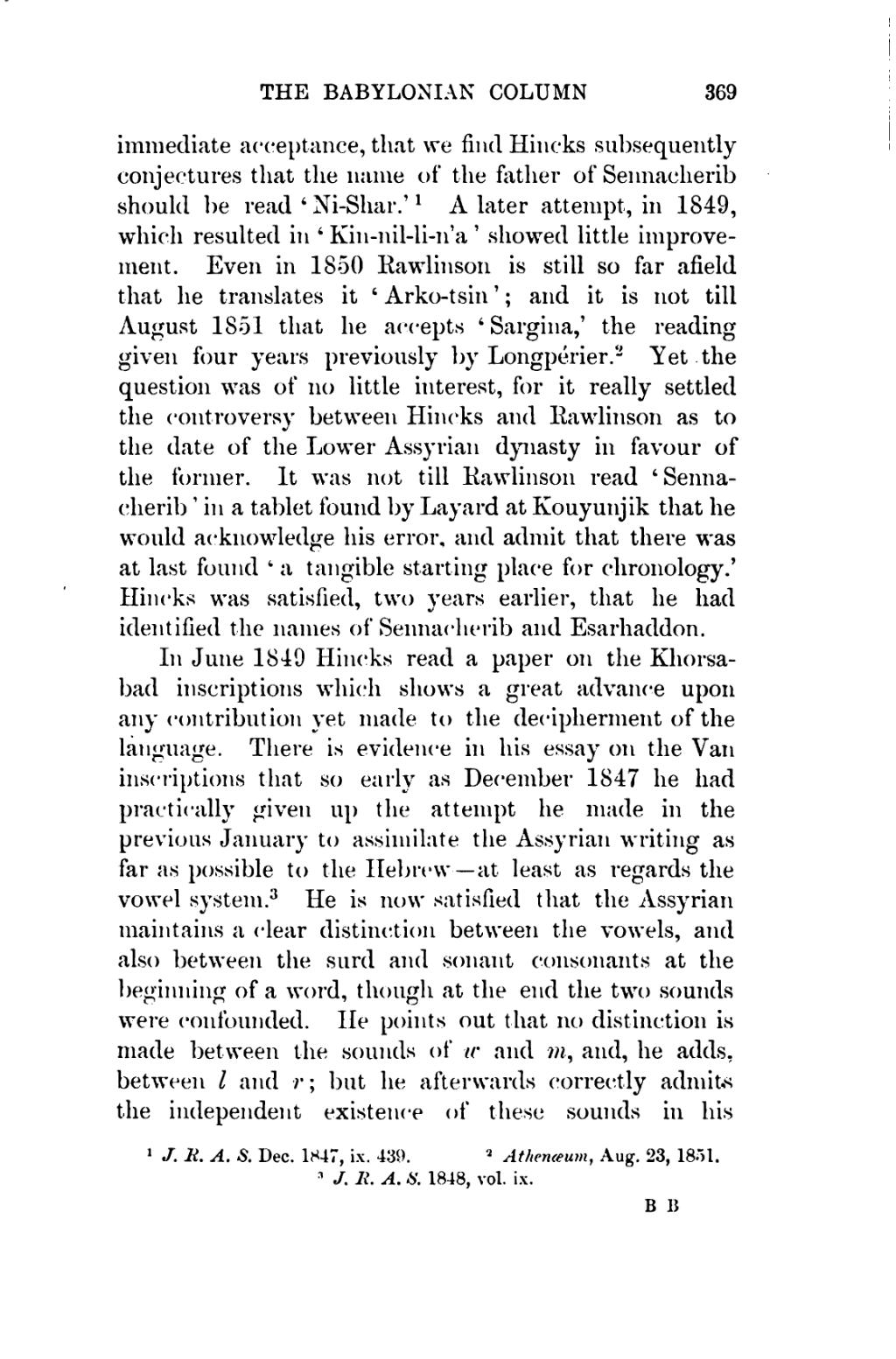immediate acceptance, that we find Hincks subsequently conjectures that the name of the faither of Sennacherib should be read 'Ni-Shar.'[1] A later attempt, in 1849, which resulted in 'Kin-nil-li-n'a' showed little improvement. Even in 1850 Rawlhison is still so far afield that he translates it 'Arko-tsin'; and it is not till August 1851 that he accepts 'Sargina,' the reading given four years previously by Longpérier.[2] Yet the question was of no little interest, for it really settled the controversy between Hincks and Rawlinson as to the date of the Lower Assyrian dynasty in favour of the former. It was not till Eawlinson read 'Senna-cherib ' in a tablet found by Layard at Kouyunjik that he would acknowledge his error, and admit that there was at last found 'a tangible startnig place for chronology.' Hincks was satisfied, two years earlier, that he had identified the names of Sennacherib and Esarhaddon.
In June 1849 Hincks read a paper on the Khorsabad inscriptions which shows a great advance upon any contribution yet made to the decipherment of the language. There is evidence in his essay on the Van inscriptions that so early as December 1847 he had practically given up the attempt he made in the previous January to assimilate the Assyrian writing as far as possible to the Hebrew—at least as regards the vowel system.[3] He is now satisfied that the Assyrian maintains a clear distinction between the vowels, and also between the surd and sonant consonants at the beginning of a word, though at the end the two sounds were confounded. He points out that no distinction is made between the sounds of w and m, and, he adds, between l and r; but he afterwards correctly admits
the independent existence of these sounds in his
